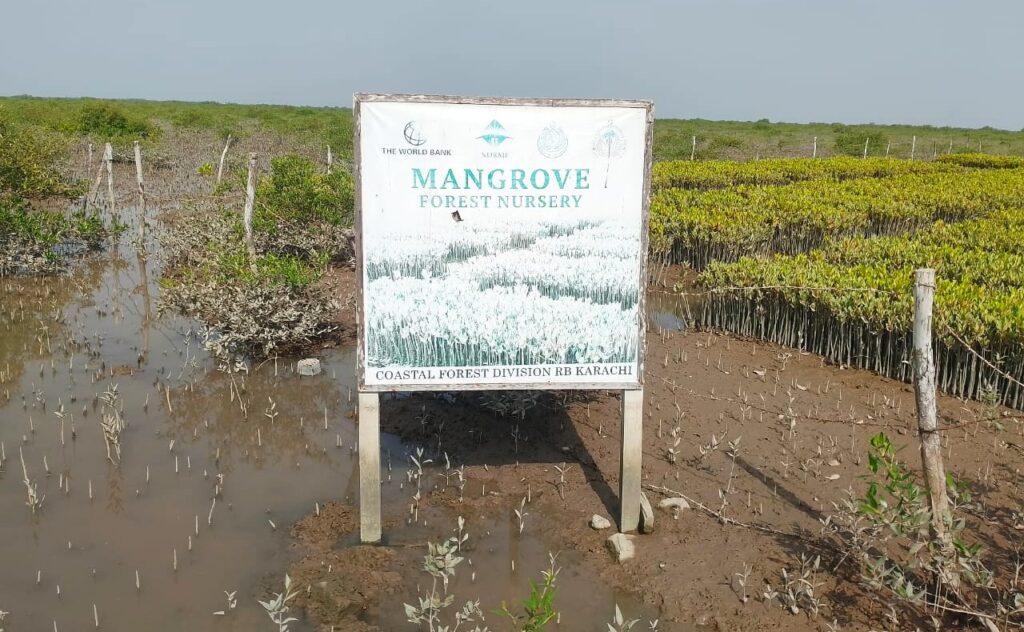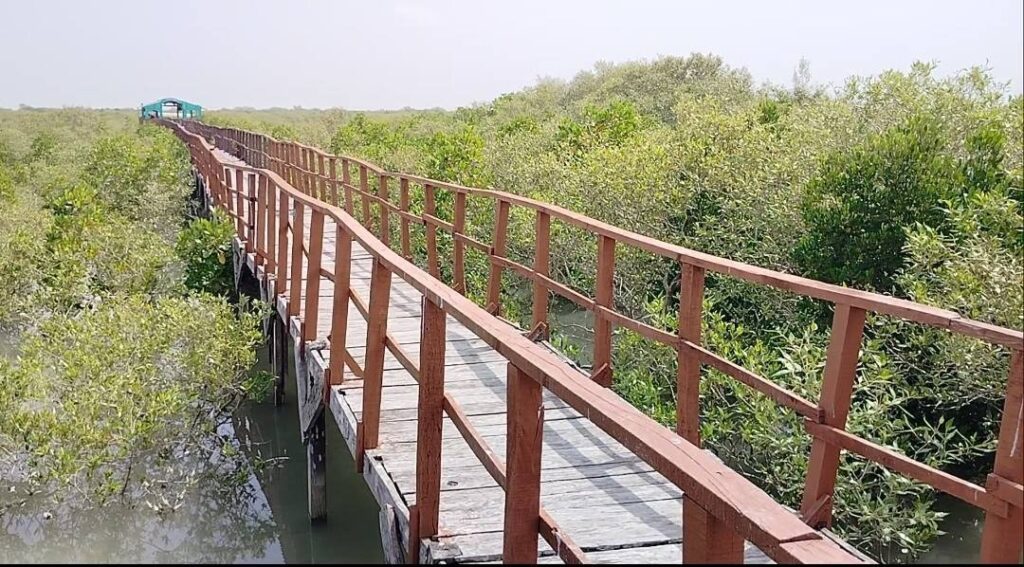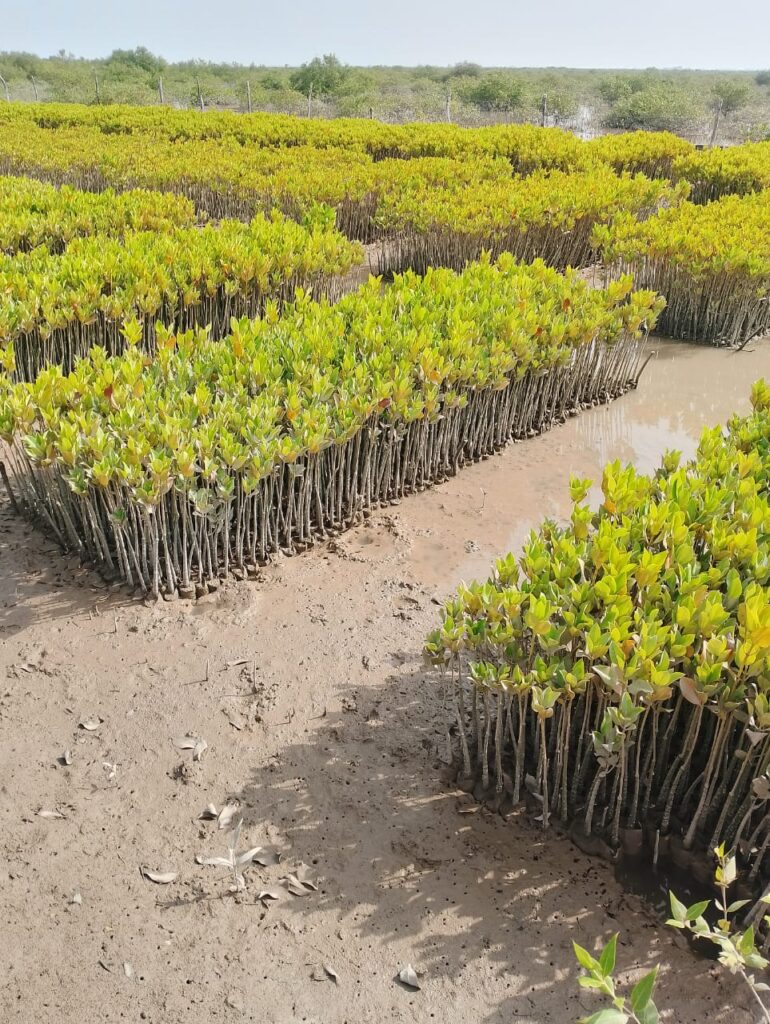
By Imtiaz Hussain
SUKKUR: Mangroves have long been recognized as a key species for climate resilience and a natural shield protecting coastlines from the sea. They serve as a buffer against rising sea levels, storms, and erosion, while providing vital habitats for marine life and supporting local communities.
Khan Muhammad Jamali, Range Officer at the Forest Department in Ketty Bandar, explained that mangroves reduce the impact of waves and storms, protecting coastal communities and infrastructure. He added that mangroves are highly efficient at storing carbon, making them essential for climate change mitigation.
“They provide habitat for a wide range of species, including fish, birds, and other wildlife,” he said. “They support fisheries and local economies, offering resources and income for communities. Mangroves also help filter pollutants and improve water quality, benefiting both marine life and human populations.”
Jamali noted that around 250,000 hectares of mangroves had been planted in Ketty Bandar, supported by a nursery that provided employment for both men and women. He added that mangroves were mostly planted in arid zones, where they faced threats due to a lack of freshwater.
He highlighted the Delta Blue Carbon project, a pioneering initiative aimed at restoring mangrove forests in Pakistan’s Indus Delta. Covering over 350,000 hectares of tidal wetlands, it is the world’s largest blue carbon project.
“The project seeks to restore degraded mangrove forests, promote climate change mitigation and adaptation, conserve biodiversity, and support local communities,” he said.

The project has already restored 73,125 hectares of mangroves, sequestered over 5.4 million tons of CO2, and created between 15,000 and 21,000 jobs for local people. It has improved livelihoods for 43,000 to 70,000 people, providing better access to education, healthcare, and clean water. It also protects 11 globally threatened species, including the Indus River dolphin and Indian pangolin, supports local fisheries, and enhances coastal resilience, contributing to 13 United Nations Sustainable Development Goals.
The initiative is a public-private partnership between Indus Delta Capital and the Government of Sindh, verified under Verra’s Verified Carbon Standard (VCS) and Climate, Community & Biodiversity Standards (CCBS). It demonstrates the potential of nature-based solutions to address climate change while benefiting communities and biodiversity.
Mai Sakina, a local resident, said that while she had little knowledge of the Delta Blue Carbon project itself, she had noticed tangible benefits from mangrove restoration. “Hundreds of men and women in the community have earned wages,” she said.
Ghul Hassan Shedi emphasised that mangroves not only protect coastlines but also increase fish populations, including species such as Khaikhro and Jhengho. “They also help reduce the intensity of cyclones,” he said.

Fishermen Muhammad Ismail Memon and Ali Hassan Jatt said mangroves had boosted fish stocks, particularly Khaikhro, which they exported to China and Bangladesh. “We earn thousands of rupees from fishing Khaikhro,” they said.
They added that while they had limited knowledge of the Delta Blue Carbon project, it had supported their community through schools, solar plants, sewing machines, and, for the first time in decades, access to clean water. They acknowledged the support of organisations including the Islamic Corporation for the Development of the Private Sector (ICD), the Aga Khan Foundation, the World Wide Fund (WWF), and the National Rural Support Programme (NRSP).
Community members suggested establishing corporate social responsibility (CSR) funds from the Delta Blue Carbon project, similar to royalties from gas and oil production, to fund local development. They also called for public awareness campaigns and the creation of development committees representing local people to propose projects funded through CSR initiatives.

